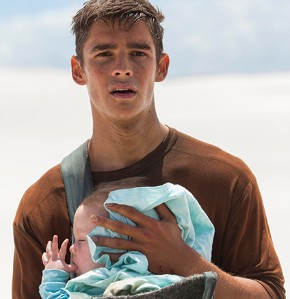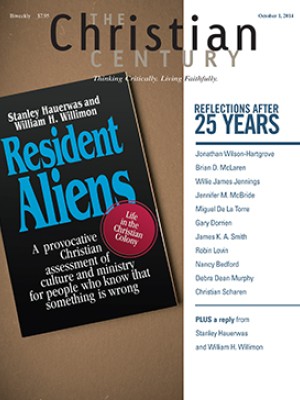The Giver’s temptations

The Community’s chief elder, played by a steely Meryl Streep, utters the film’s decisive line: “When people have the freedom to choose, they choose wrong.” Her eyes, locked on the viewer, are impossible to ignore. The questions behind that line—the moral wrestling, the tortured ethical calculus, the ambiguity, and the clarity—make for a fine movie. The Giver is the purest form of dystopian narrative, distilled to its most essential elements: power, choice, and the striving for human perfection gone wrong. It’s like an O. Henry story for the hot young adult fiction market.
In this postapocalyptic world the Community is everything. The hero, Jonas (Brenton Thwaites), is likable, earnest, and naive and a contrast to the recent wave of female action heroines—The Hunger Games’s Katniss and Divergent’s Tris. Jonas seems much younger than those heroines, and his drama—true to the rest of the story—is less martial and more interior. The fighter planes and chase scenes seem meant only to keep the film from growing too dreamy.
Read our latest issue or browse back issues.
The film is based on Lois Lowry’s novel of the same title, which won the Newbery Medal in 1994. Perhaps the making of a movie version had to wait for the current revival of interest in dystopias.
On an appointed day, teens in the Community leave their childhoods behind and are assigned jobs based on their talents and interests. Jonas wonders what he will do. He’s not like his friend Fiona (Odeya Rush), whose affinity for caring for infants has made childcare an obvious choice. Jonas is surprised when he finds himself apprenticed to the mysterious Giver (Jeff Bridges), who will train Jonas to take over his position. Jonas’s job will be to receive and keep the memories of humanity.
The Community eschews individuality in favor of a quiet but totalitarian “Sameness” meant to keep everyone safe. In the novel Jonas narrates, “Our people made that choice, the choice to go to Sameness. Before my time, before the previous time.” Jonas will receive memories of the Community—memories of all that no longer exists there, memories of differences that his radically egalitarian community has swept away as it embraces its focus on Sameness. The memories will help him advise the Community.
As he begins his training as the Giver, Jonas receives beautiful things and does so with delight. The film manages to translate some of the numinous quality of the novel, making nice use of the contrast between the black-and-white world of the Community and the new world that opens up to Jonah—a world of color. He alone among his friends can see the red of an apple. As Jonas narrates, “We relinquished color when we relinquished sunshine and did away with difference. We gained control of many things. But we had to let go of others.”
His apprenticeship becomes less beautiful as he experiences memories of pain, violence, and war. He also learns hard things about the Giver’s previous apprentice (a cameo by Taylor Swift), about his father’s work, and about the mechanisms the Community uses to preserve Sameness. When Jonas learns that a vulnerable member of the Community is threatened, he makes a choice for change, and the Giver tries to strengthen him with memories of other people who have stood up to evil.
If ever a movie with a teenage protagonist was tailor-made for sermon illustrations, it is The Giver. Theodicy and freedom, difference and sameness, individuality and community—all play important roles. I’ve never reviewed a film that I could so easily mold in any theological direction. I could use it to write a prolife riff or a feminist critique. I could hone in on the Community’s decision to erase religion and critique the assumption that religiosity necessitates violence. I could use it to write about sinful distortions of community and a grand theological vision of human freedom. I could muse on eschatological longings and the way that kingdoms go wrong when we try to force the kingdom by human fiat.
The film seems made for our moral use. But the flexibility and nuance of this pretty parable call us to resist that temptation. Inasmuch as the film does something real that is moral, it resists moralism. I’m not suggesting that all art is or should be useless. But our ham-fisted attempts to use such works may violate the gentleness of this story and interfere with the quiet, ruminative work such stories do as they simmer in our moral imaginations.





